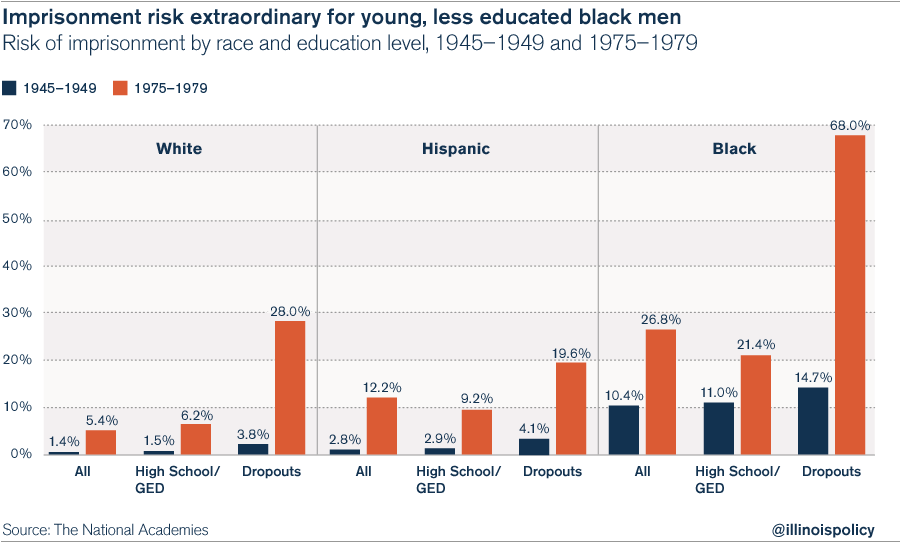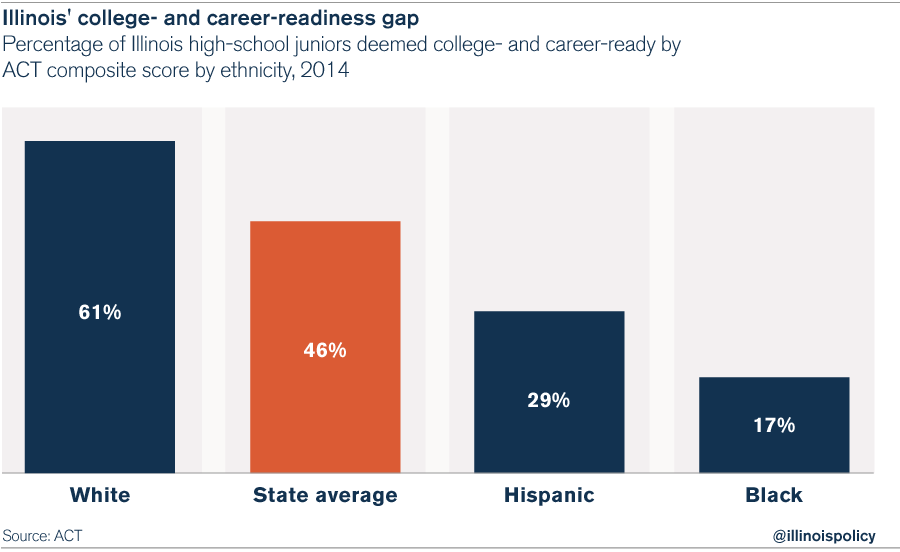High black imprisonment risk tied to educational opportunity
Fixing criminal-justice disparities means improving education as well.
There’s a strong correlation between not having a high-school degree and the likelihood you’ll end up in jail. This is true whether you are white, black or Hispanic.
But the statistics are especially dramatic for the cohort of black men born between 1975 and 1979, meaning they are 35 to 40 years old today.
Recent national data presented at a MacArthur Foundation event in Chicago showed that for blacks in that cohort holding a high-school or GED diploma, 2 in 10 have been imprisoned in their lifetime.
That’s already high, but take away the diploma and the incarceration rate jumps dramatically: nearly 7 in 10 black male dropouts in that cohort have been imprisoned.
The 2014 statistics in Illinois paint a similar picture.
Just 31.7 percent of Illinois prisoners have earned a high-school degree. Another 19 percent have their GED diplomas, but this correlates with less annual income than high-school graduates will earn.
The more telling fact is that while blacks make up less than 15 percent of the state’s population, they represent nearly 60 percent of Illinois’ prison population.
The reasons for the racial disparity in incarceration are complex and include much more than just educational attainment. Shifts in criminal sentencing policy, a lack of economic opportunity and associated high levels of poverty also contribute to the disparity.
But if the correlation between lack of education and imprisonment continues to hold, the disparity in black incarceration levels in Illinois may not improve any time soon.
In 2014, only 1 in 3 of black students in Illinois’ public schools could read at grade level, according to the Illinois State Board of Education, or ISBE. That compares to 69 percent for Illinois’ white students.
These early deficits result in even fewer black high-school graduates being on pace to attend college or enter the workforce.
Only 17 percent of black students graduate college- and career-ready, as determined by their ACT scores.
There’s no denying that Illinois’ public schools have failed to prepare the broader black student population for a better future. More money and a bigger bureaucracy for Illinois’ public-school system have not created positive results.
It’s time to give children access to high-quality education, no matter their neighborhood, how much money their parents make or their race or ethnicity.
Illinois should lead through innovation by offering families and children more educational options and access to a variety of school types, whether public or private, big or small. With better schools, there’s a good chance Illinois can prevent many of its young people from getting into trouble in the first place.
Without reform, too many black children will continue to move from one failed system to another.



